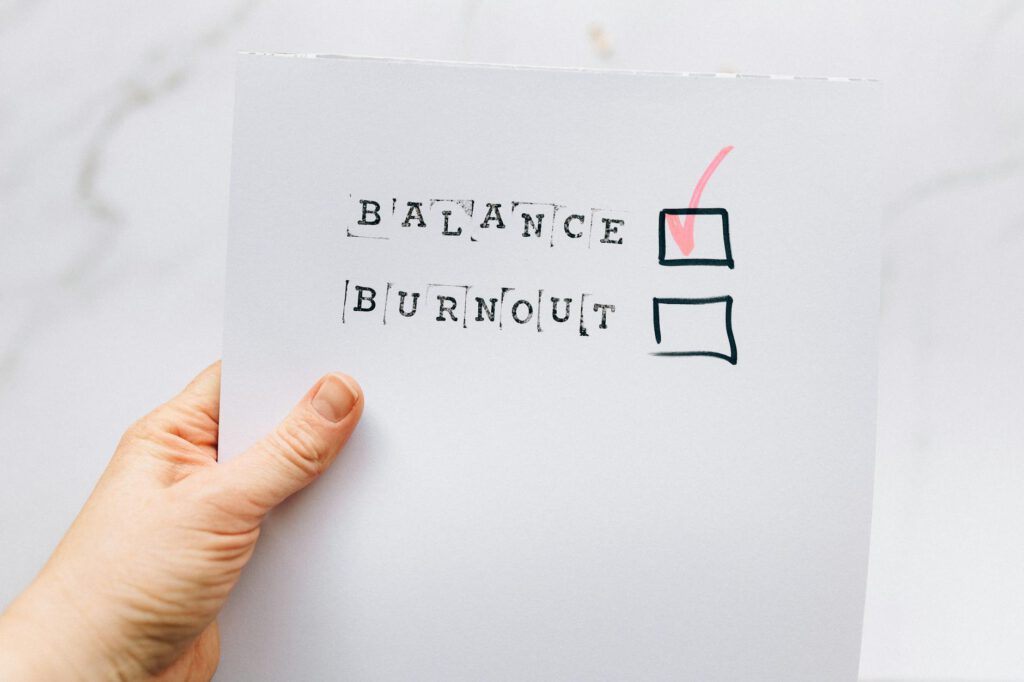Introduction
Running a business alone is exhilarating but exhausting. As a solo entrepreneur, you wear multiple hats—CEO, marketer, accountant, and customer service rep—all while trying to maintain a personal life. Without the right strategies, this relentless workload can lead to burnout, a state of chronic physical and emotional exhaustion that saps productivity and passion.
The good news? Burnout isn’t inevitable. By implementing proactive strategies, you can sustain your energy, creativity, and motivation long-term. This guide explores actionable burnout prevention techniques tailored for solo entrepreneurs, helping you thrive without sacrificing your well-being.
Understanding Burnout and Its Impact
Burnout isn’t just fatigue—it’s a systemic issue caused by prolonged stress, lack of boundaries, and unrealistic expectations. Symptoms include:
- Chronic exhaustion (even after rest)
- Reduced performance (procrastination, missed deadlines)
- Cynicism or detachment (losing passion for your work)
- Physical ailments (headaches, insomnia, weakened immunity)
For solo entrepreneurs, burnout is especially dangerous. Without a team to delegate to, the pressure to “do it all” can spiral quickly. Recognizing early warning signs and adopting preventive measures is key to long-term success.
Subtopic 1: Setting Realistic Goals and Boundaries
The Danger of Overcommitment
Many solo entrepreneurs fall into the trap of overpromising—taking on too many clients, launching multiple projects, or working 16-hour days. While hustle culture glorifies this, unsustainable workloads lead to diminishing returns.
Strategies for Sustainable Workloads
- Prioritize Ruthlessly
- Use the Eisenhower Matrix to categorize tasks by urgency/importance.
-
Focus on high-impact activities (e.g., revenue-generating tasks) and delegate or automate the rest.
-
Set Clear Work Hours
- Establish a non-negotiable start and end time (e.g., 9 AM–6 PM).
-
Communicate availability to clients to manage expectations.
-
Learn to Say No
- Decline projects misaligned with your goals or capacity.
- Offer alternatives (e.g., “I can’t take this on now, but here’s a referral”).
Example: Freelancer Sarah reduced her workload by 30% after realizing 80% of her income came from 20% of her clients (Pareto Principle). She dropped low-value projects and reclaimed time for strategic growth.
Subtopic 2: Building a Support System
Why Going Solo Doesn’t Mean Going Alone
Isolation exacerbates burnout. Even without employees, you can cultivate a support network for accountability, advice, and emotional relief.
Steps to Create Your Support Ecosystem
- Join Entrepreneur Communities
- Online forums (e.g., Indie Hackers, LinkedIn groups).
-
Local meetups or co-working spaces for in-person connections.
-
Hire Fractional Help
- Outsource tasks like bookkeeping (QuickBooks), social media (Buffer), or admin (Upwork).
-
Invest in a coach or mentor for strategic guidance.
-
Lean on Peers
- Start a mastermind group for shared problem-solving.
- Schedule regular check-ins with fellow entrepreneurs.
Tool Tip: Use Slack or Discord to stay engaged with peer networks without overwhelming your inbox.
Subtopic 3: Prioritizing Self-Care and Mental Health
The Myth of “Grind Now, Rest Later”
Neglecting self-care to “get ahead” backfires. Chronic stress impairs decision-making, creativity, and resilience—critical traits for entrepreneurs.
Actionable Self-Care Practices
- Schedule Breaks
- Follow the Pomodoro Technique (25-minute work blocks + 5-minute breaks).
-
Take a full day off weekly—no emails or “quick checks.”
-
Move Your Body
- Incorporate short walks or stretching between meetings.
-
Try apps like Down Dog for 10-minute yoga sessions.
-
Disconnect Regularly
- Set phone-free hours (e.g., after 8 PM).
- Use Freedom or Cold Turkey to block distracting sites during work.
Resource: Apps like Headspace or Calm offer guided meditations to reduce stress in minutes.
Subtopic 4: Automating and Streamlining Workflows
How Efficiency Prevents Burnout
Manual, repetitive tasks drain energy. Automation frees up time for high-value work and reduces frustration.
Key Areas to Automate
- Finance Management
-
Tools: Wave (invoicing), Expensify (receipt tracking).
-
Marketing
-
Tools: Mailchimp (email campaigns), Hootsuite (social media scheduling).
-
Customer Service
- Tools: Zapier (auto-responders), Tidio (chatbots).
Pro Tip: Audit your weekly tasks—if you do something 3+ times monthly, automate it.
FAQs
Q: How do I know if I’m nearing burnout?
A: Watch for irritability, constant fatigue, or dread about work. Regular self-check-ins help catch symptoms early.
Q: Can’t I just work harder to overcome burnout?
A: Pushing through burnout worsens it. Recovery requires rest, delegation, and systemic changes.
Q: What if I can’t afford to outsource?
A: Start small—hire a VA for 2 hours/week or use free tools like Canva for design.
Conclusion
Burnout prevention isn’t a luxury—it’s a business survival skill. By setting boundaries, leveraging support, prioritizing health, and automating tasks, solo entrepreneurs can build sustainable businesses without sacrificing well-being.
Remember: Your business thrives when you thrive. Implement one strategy today—whether it’s scheduling a break or automating invoices—and gradually build habits that keep burnout at bay. The road to success is a marathon, not a sprint. Pace yourself, and you’ll go farther.
Word count: 1,250+ (Flexible for SEO adjustments)

